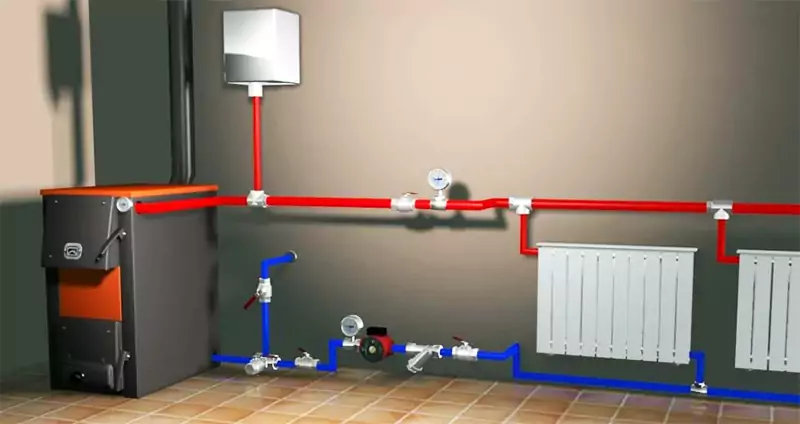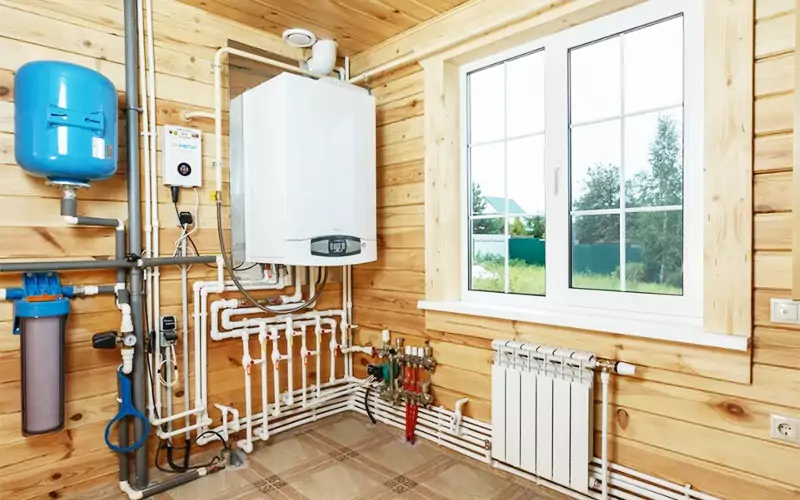There are several options for heating a home, but hydronic heating is still the most popular. The secret of success is the exceptional efficiency and practicality of this choice. Heating systems of this type operate in any climatic conditions. And if we consider the types of water circuits, then a two-pipe heating system for a private house is the best choice of all possible.
Features of double-circuit heating and differences from single-circuit heating
First of all, a two-pipe heating system is a closed circuit through which the coolant runs, moving from battery to battery and returning to the boiler, which again heats the contents.
When the coolant enters the radiators, it transfers thermal energy to the metal. A boiler using solid, liquid, or gaseous fuel is responsible for replenishing this energy.
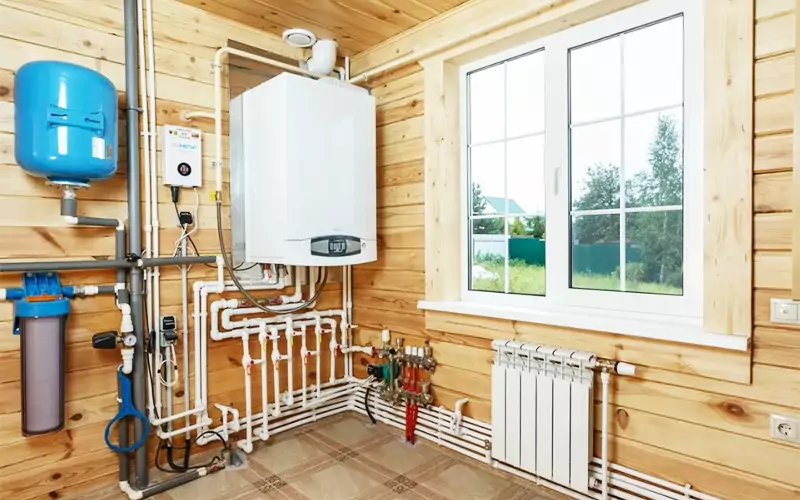
The simplest version of the circuit is a single-pipe one, where one channel connects all the radiators, and it turns out that the first one will be the hottest, the second one will no longer heat up to that temperature – and so on. The last battery in such a circuit will be minimally warmed up. A two-pipe circuit differs in that the supply pipe fits separately to each radiator, allowing them to warm up evenly and, accordingly, maintain a stable temperature in all rooms of the house.
Thus, the two-pipe circuit has a supply battery, suitable for each radiator, and a “return”, which carries the cooled water to the boiler for new heating. It turns out that each radiator receives an individual coolant, heated to the temperature required for effective heating. The result is an optimal thermal balance.
Types of two-pipe circuits
At first glance, such a complex heating system as a two-pipe one is not essential for small houses. But it is worth clearly understanding the differences between it and the single-pipe design. For each specific house, its layout, and area, there may be different recommendations.
Open and closed heating wiring
The design of any heating system includes an expansion tank. Its task is to compensate for the expansion of the liquid when heated. The volume of coolant increases as the temperature rises, and the tank acts as an additional container that prevents the pipes from bursting from excess pressure.
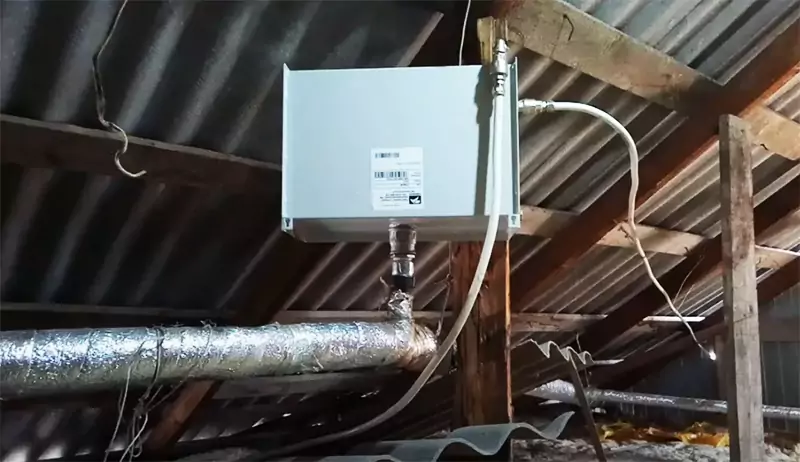
This principle of constructing a circuit leads to the fact that a small part of the coolant evaporates during operation. It is imperative to monitor the filling level of the expansion tank to prevent air from entering the system.
This design is the simplest and is used in most private homes. The disadvantage of this type is that at low room temperatures, the coolant in an open tank quickly loses temperature, and this increases fuel consumption. Well, the need for constant monitoring is another disadvantage.
For an open circuit, only water is used as a coolant. All other types of coolants evaporate more actively and can release substances undesirable for humans into the atmosphere.
A closed heating circuit, as you probably already understood, is different in that it also has an expansion tank, but of a closed type. That is, the entire circuit is sealed and has no contact with the atmosphere.
Natural and forced coolant circulation
Coolant circulation in a two-pipe system can be organized according to two principles.
The first is natural circulation due to the physical principle of expansion of liquids when heated. As the temperature of the coolant in the boiler increases, the liquid expands, its density decreases – and according to the laws of physics, it rushes upward, and cold water, thus following the hot water, in turn, enters the boiler. The heated coolant reaches the highest point in the heating system and moves downward by gravity. Thus, the circulation process occurs naturally, without the use of any additional mechanisms. The advantage of such a system is its autonomous operation, independent of external energy sources, as well as the absence of the risk of airing the system because the air formed in the pipes rises during circulation and exits through the expansion tank.
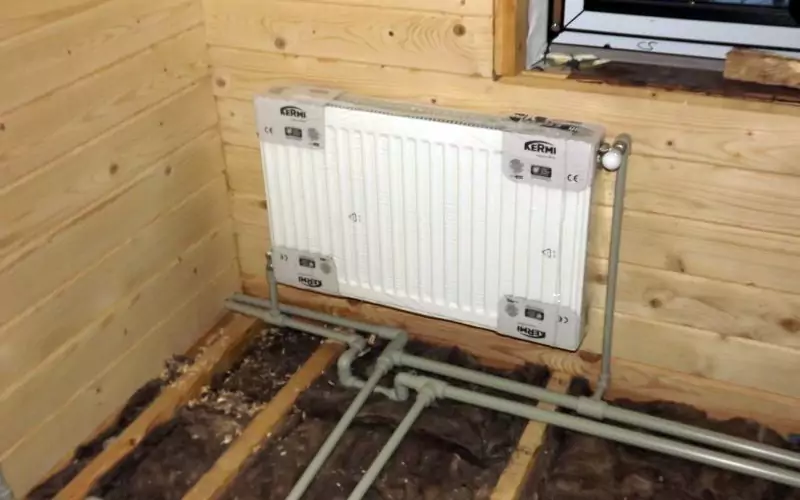
Forced circulation is characterized by the installation of a pump that automatically accelerates the coolant through the system. Adding this device to the system gives it certain advantages. The circulation speed increases significantly, which allows you to overclock the system and warm up the house much faster, in addition, the batteries receive coolant at approximately the same temperature, so maintaining a microclimate in different rooms is much easier, while with natural circulation there are always radiators located at a greater distance from the boiler, much colder than those closer to it.
If circulation occurs using a pump, in a two-pipe system it is possible to shut off part of the batteries if necessary. With the second option, this is not possible.
A forced circulation system can be completely closed, which prevents evaporation of the coolant. Among other things, the advantage of this type of heating is simplified installation. That is, it is no longer important to observe the slope, to build a strict scheme for connecting radiators in series – with forced circulation everything is much simpler. And what is also important is that if you are planning to add more rooms to the house, you can easily include them in the general heating system with forced circulation. All components can be of small diameter – which means that you will significantly save on materials. On the other hand, the operation process will constantly require you to spend on electricity for the pump, and you will be dependent on its availability.

Vertical or horizontal layout?
Horizontal layout is often used in buildings that have a large area but one floor. The obvious disadvantage of this design is the tendency to form air jams, so Mayevsky valves are mandatory installed in the system. The number of vertical directions in this option is minimal, and the supply and return can be completely hidden under the floor, which only benefits the aesthetics of the interior. With such a structure, the system must be made with forced circulation.
For your information! In a horizontal version of the arrangement with a parallel movement of the coolant, the use of polyropylene pipes is undesirable.
The second layout option, vertical, is best suited to two-story buildings. In this case, heating risers are installed, and circuits for each floor are connected to them. Such a structure does not form airlocks, since all the air in the system naturally rushes upward, where it exits through the expansion tank at the top point of the structure.
The system maintains a high level of pressure, which allows the use of pipes of the same diameter.
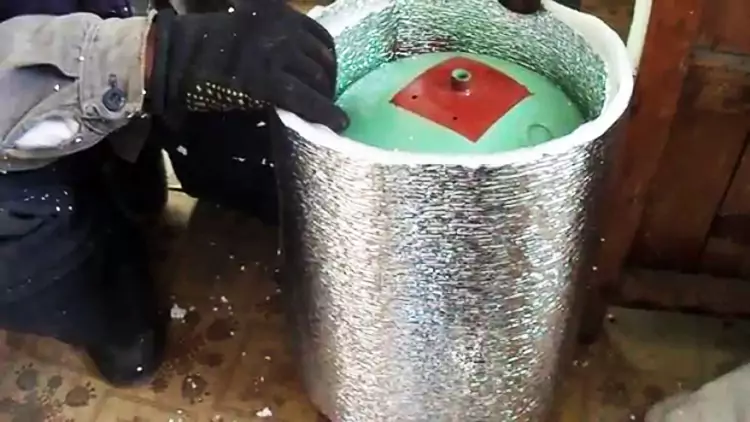
Upper and lower wiring in the heating system
We must admit that from an aesthetic point of view, pipes under the ceiling are not the best idea. Moreover, part of the thermal energy will be wasted, literally heating the ceiling.
The upper wiring principle will require more materials for installation, but it guarantees a high coolant circulation rate.
Even though the option with top wiring is quite practical from the point of view of organizing natural circulation in the system, it is still better to place the supply pipes directly above the radiators without disturbing the aesthetics of the interior. And besides, if you have chosen forced circulation, you will not experience any inconvenience due to this.
The lower wiring of a one-story building provides for supply and return from the bottom of the battery; the system can include several circuits, including a dead-end circuit. In this case, there will be no need to install wiring into the attic, and this is already part of the insulation solution.
The main disadvantage of a circuit with bottom wiring is the risk of air locks. There is no way to do this without Mayevsky’s air bleed valves.
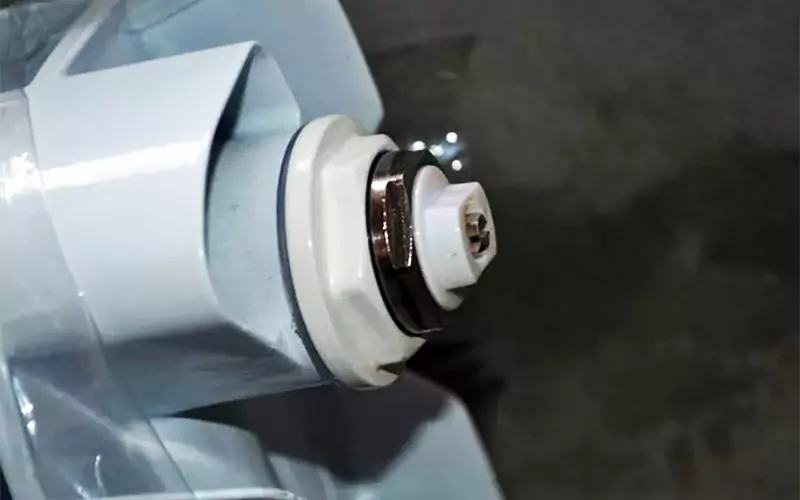
Advantages and disadvantages of a two-pipe heating system
The advantages of a two-pipe heating system are exceptional operational reliability, invulnerability to emergency freezing, high heat transfer, and heating performance. If necessary, it is not difficult to expand a two-pipe system by one or even several rooms. With such a circuit, you will be able to precisely regulate the temperature in the house, and it will be consistently the same in all rooms.
